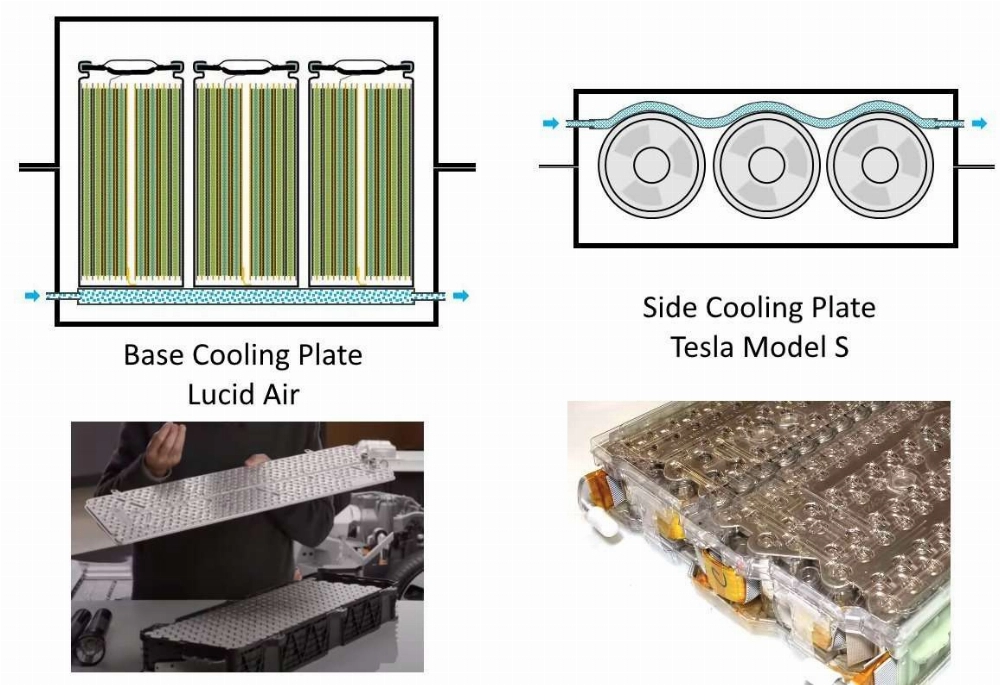Part 1: What Does Battery End-of-Life Mean?
When people talk about the end-of-life of a battery, they are usually referring to the point at which the battery effectively stops working or no longer holds a charge. However, in the context of battery technology, the “end-of-life” we are referring to here is more specifically related to the battery terminals. These terminals are essential for the battery’s operation, as they allow electrical energy to flow into and out of the battery, powering the connected device.
In this article, we will explore what battery lifespan really means, focusing on the battery terminals. These terminals are crucial for the correct connectivity of the battery to a device and play a significant role in the battery’s lifespan and performance. We will also cover how to identify positive and negative terminals and discuss how these components affect the battery’s lifespan and performance.
Part 2: What are Battery Terminals?
A battery’s polarity is defined by two electrical contacts located at either end of the battery: the positive and negative terminals. These terminals enable the battery to connect to a device or circuit, allowing current to flow. The positive terminal is where current flows out, and the negative terminal is where current returns to after powering the device.
-
Positive Terminal: Usually marked with a “+” sign or colored red, the positive terminal is where electrical power exits the battery to flow into the connected device or circuit.
-
Negative Terminal: Typically marked with a “–” sign or colored black, the negative terminal is where the current returns after powering the device, completing the circuit.
Therefore, the terminals are crucial to a battery’s function and performance because they are the points of energy transfer.
Part 3: How to Identify Positive and Negative Battery Terminals
Understanding how to distinguish between the positive and negative terminals of a battery is crucial, especially when dealing with different types of devices or batteries. Here are some ways to easily distinguish them:
-
Markings and Symbols: Most batteries clearly label the positive (+) and negative (-) terminals. The positive terminal is usually indicated with a “+” symbol or marked in red, while the negative terminal is identified with a “–” symbol or in black.
-
Size and Shape: In common batteries (AA, AAA), the positive terminal is typically raised, while the negative terminal is flat.
-
Battery Connector Types: For larger batteries, such as those used in cars or power tools, the positive terminal often features a larger post or a more secure cable connection point. Conversely, the negative terminal tends to have a smaller post or connection point.
-
Voltage Indicators: Advanced batteries (lithium-ion, NiMH) often have voltage ratings marked near the terminals. The positive terminal will have a higher voltage rating than the negative terminal.
Correctly identifying the positive and negative terminals is essential to avoid damaging equipment or creating safety hazards when installing batteries.
Part 4: How Battery Terminals Affect Performance
Battery terminals are critical to performance. As the points of energy transfer, they directly impact the efficiency with which a battery powers a device. Any damage, corrosion, or poor connection at the terminals can hinder the flow of current, leading to various issues. Here’s how the condition of the terminals can affect battery performance:
-
Resistance: Dirt, corrosion, or wear on the terminals can increase resistance. This slows down the flow of current, reducing the battery’s efficiency and causing it to drain faster.
-
Current: Poor connections between the battery and the device can lead to unstable power delivery, resulting in performance issues and shortened battery life.
Understanding how battery terminals affect performance can help users maintain optimal battery function. For example, if you are using different types of 12V battery types, ensuring clean and secure connections at the terminals can improve the battery’s lifespan and efficiency.
All About Battery Terminals: Understanding Their Importance
Positive and negative terminals play a crucial role in ensuring the correct flow of current from a battery to a device and *return*. Any connection failure or terminal damage can lead to device malfunction or failure to start.
Safety Risks
Damaged terminals on a battery can pose serious safety hazards, such as overheating, leakage, or even explosion, especially in high-capacity batteries. Preserving the integrity of the terminals is crucial to avoid these dangers.
Battery Life
Proper care of battery terminals can extend the life of a battery. Regularly cleaning and inspecting the terminals can prevent premature failure, helping the battery last longer and perform better.
Part Five: Types of Common Battery Terminals
Battery terminals come in various types, depending on the battery’s size, application, and energy needs. Here are some of the most common types of battery terminals:
1. Snap-On Terminals
Snap-on terminals are commonly used in small batteries found in toys, flashlights, and small electronic devices. These terminals feature metal clips that *click* into place, ensuring a secure electrical connection.
2. Post Terminals
Post terminals are commonly used in car batteries. These terminals feature metal posts on top of the battery; cables are connected to these posts using clamps or bolts. They are suitable for high-power applications, such as starting a car engine.
3. Lug Terminals
Lug terminals are commonly used in industrial or high-capacity batteries. They consist of a metal ring that attaches to a bolt or screw, providing a secure and reliable connection, especially for larger batteries.
4. JST Connectors
JST connectors are commonly found in small rechargeable batteries, such as those used in drones or power tools. These compact connectors are ideal for tight spaces and provide a secure electrical connection.
Part Six: Maintaining Battery Terminals for Extended Lifespan
Taking care of battery terminals is essential for optimal performance and longer battery life. Here are some maintenance tips to ensure your terminals stay in top condition:
Keep Terminals Clean
Dust, dirt, and grime can accumulate on battery terminals, leading to decreased performance. Regularly clean the terminals with a soft cloth and a mild detergent to remove any debris.
Check for Corrosion
Corrosion on battery terminals can cause poor electrical connections, leading to energy loss. If you notice any corrosion, clean the terminals with a mixture of the baking soda and water to neutralize the corrosion.
Tighten Loose Connections
Loose connections can lead to unstable power transfer and increase wear on the battery. Always ensure that the terminals are securely tightened for a smooth flow of energy.
Use Terminal Protectors
Applying a layer of terminal grease or anti-corrosion gel can protect the terminals from external elements and prevent corrosion, thereby extending the battery’s lifespan.
The Battery Terminal Conundrum: Understanding Corrosion and Addressing It
Corrosion on battery terminals can be a significant problem, affecting the efficiency and lifespan of your batteries. Regular maintenance, cleaning, and protective measures can prevent this issue and ensure your devices stay powered without any hiccups.
Part Seven: Conclusion
Battery terminals are more than just connectors; they are vital to the overall performance and lifespan of a battery. They regulate the flow of energy in and out of the battery, ensuring smooth operation of your devices. By understanding how to identify positive and negative terminals and maintaining them properly, you can maximize battery life and keep your devices running efficiently.
With proper care, such as keeping terminals clean, secure, and corrosion-free, you can improve the safety, performance, and longevity of your battery-powered devices. The next time you use a battery, take a moment to consider the importance of the terminals and keep them in good condition.
Understanding the Key Part of a Battery: Energy Exchange
At the heart of every battery lies a crucial component – the energy exchange area. This critical region powers devices, ensuring efficient energy storage and transfer, and plays a vital role in battery function.
Related Tags:
- KHZH
- Battery Technology
- Energy Exchange
- Battery Engineering
More Articles from KHZH
Understanding 11.1V Lithium Polymer Batteries: Characteristics, Advantages, and Common Applications
11.1V lithium polymer batteries are widely used to power devices like RC models and drones. This article delves into the characteristics, advantages, and common applications of lithium polymer batteries in various electronic devices, factors that make them a popular choice.
Lithium-Ion Car Jump Starters vs. Lead-Acid Batteries: What is the Real Difference?
Lithium-ion car jump starters provide a quick and reliable solution for starting a dead car battery. But how do they compare to traditional lead-acid jump starter batteries? This article explores the differences between the two, helping you make an informed decision on which option to choose.
How to Safely Clean a Leaking Battery’s Terminals: A Step-by-Step Guide
Handling leaking battery terminals can be dangerous if not done correctly. This step-by-step guide provides safety tips, explains the risks to be aware of, and details the proper methods for cleaning leaking battery terminals to ensure safe handling.
Portable Battery Chargers vs. Power Banks: What’s the Difference?
While a portable battery charger refers to any device that can charge other devices, a power bank stores energy in its own battery to charge devices without needing an external power source.
The Ultimate Guide to Using Lithium-Ion Car Jump Starters
Lithium-ion car jump starters can be incredibly useful for automotive emergencies. This comprehensive guide covers all the essential information about using lithium-ion car jump starters, including safety tips, maintenance guidelines, and why they are a worthwhile investment for vehicle owners.








